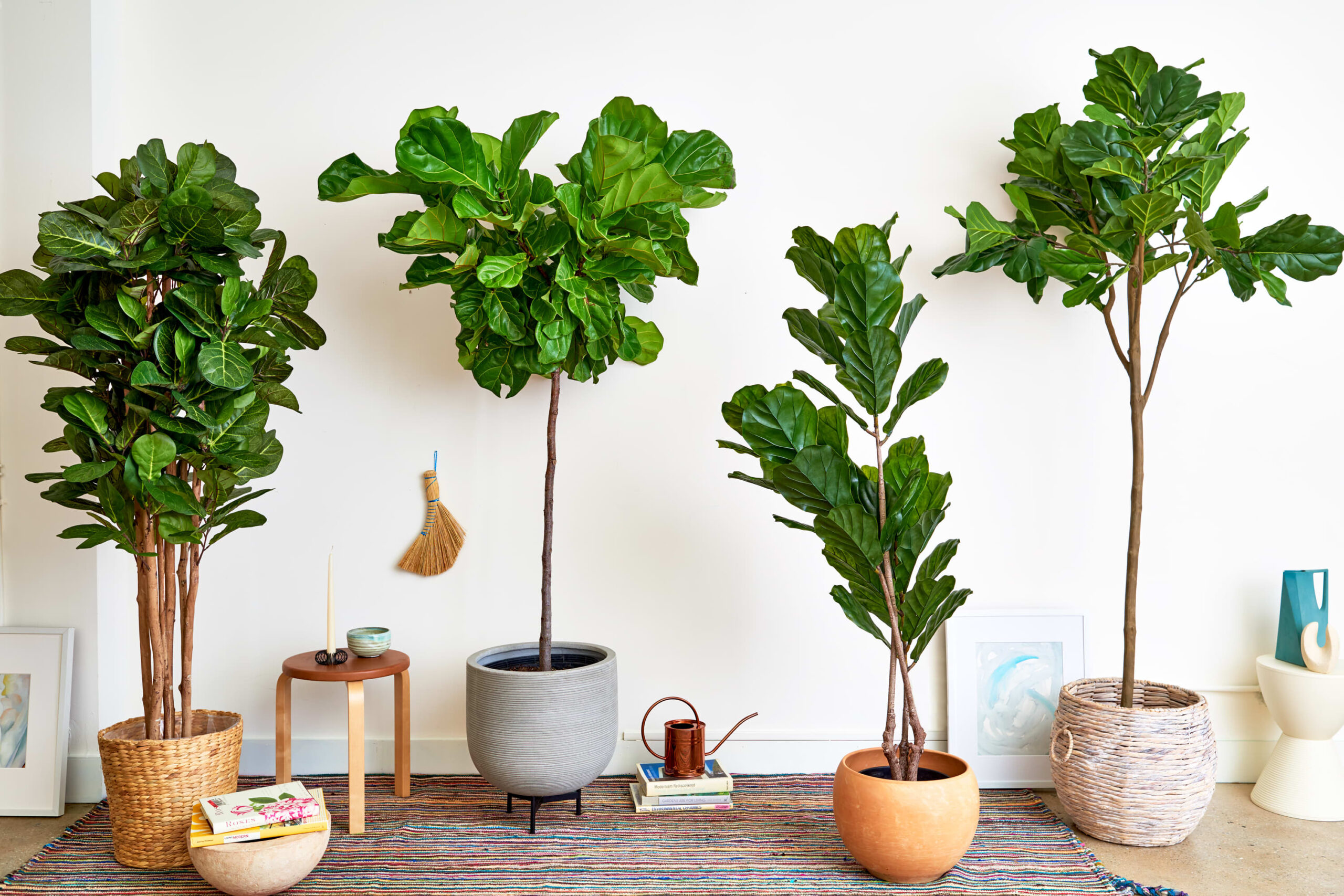In recent years, there has been a growing trend toward incorporating natural elements into interior design, particularly in the kitchen. One way to achieve this is by using natural and minimalistic plant pots to bring life and freshness to your culinary space. Not only do these plant pots add a touch of greenery and beauty, but they also provide numerous benefits such as improved air quality, stress reduction, and a connection to nature. In this article, we will explore the various types of natural and minimalistic plant pots available and discuss how they can transform your kitchen into an inviting and vibrant space.
The Benefits of Indoor Plants
Before delving into the world of natural and minimalistic plant pots, let’s briefly discuss the benefits of incorporating indoor plants into your kitchen. Indoor plants not only enhance the aesthetics of a space but also offer several advantages. They improve air quality by removing toxins and releasing oxygen, creating a healthier environment for cooking and dining. Additionally, plants have a calming effect and can help reduce stress and increase productivity. By bringing nature indoors, you create a soothing and refreshing atmosphere in your kitchen.
Choosing Natural Materials
When selecting plant pots for your kitchen, opt for natural materials that complement your overall design aesthetic. Materials like terracotta, ceramic, clay, or even sustainable bamboo are excellent choices. While stating the advantage, Lindsey Hyland, a gardening expert and founder of UrbanOrganicYield, commented, “…These materials not only add an organic touch but are also durable and long-lasting. Terracotta pots, for example, have a rustic charm and allow the soil to breathe, preventing waterlogging and promoting healthy plant growth.”
Minimalistic Designs
Minimalism has gained popularity in interior design due to its clean and clutter-free aesthetic. Minimalistic plant pots are characterized by simple, sleek lines and a focus on functionality. These pots often feature neutral colors such as white, black, or earth tones, allowing the plants to take center stage. Minimalistic designs blend seamlessly with various kitchen styles, whether you have a modern, Scandinavian, or farmhouse-inspired space.
Hanging Planters
Hanging planters are an excellent choice for kitchens with limited counter or floor space. They can be suspended from the ceiling or mounted on walls, adding visual interest and vertical dimension to your kitchen. Macrame plant hangers made of natural fibers like jute or cotton create a bohemian vibe, while geometric metal holders offer a more contemporary look. Hanging herbs or trailing plants like pothos or ivy in these planters will make your kitchen feel like a lush oasis.
Wall-Mounted Planters
If you want to create a living wall or utilize empty wall space, consider wall-mounted planters. These planters can be attached directly to the wall, allowing you to grow herbs, small vegetables, or cascading plants. Vertical gardens not only add beauty but also provide easy access to fresh ingredients while cooking. Choose modular systems that can be rearranged and expanded as your collection of plants grows.
Herb Planters
Fresh herbs are a must-have in any kitchen, and having them readily available is both convenient and inspiring. Herb planters designed specifically for kitchen use are compact and often feature multiple compartments or tiers. These planters allow you to grow a variety of herbs in a small space, keeping them within arm’s reach while you cook. Some herb planters even incorporate built-in watering systems, making them low maintenance and perfect for busy home cooks.
Window Sill Planters
The kitchen window sill is an ideal spot for a mini herb garden or a collection of potted plants. Window sill planters come in various sizes and designs, allowing you to maximize the available space. Opt for sleek, narrow planters that won’t obstruct the view or interfere with opening and closing the window. This setup brings nature closer to your cooking area and allows plants to bask in natural sunlight.
Hanging Herb Drying Racks
If you enjoy preserving herbs for later use, a hanging herb drying rack is a functional and decorative addition to your kitchen. These racks typically feature multiple tiers or hooks where you can hang bundles of herbs to air dry. Choose a design that complements your kitchen decor, such as a wooden rack with a rustic charm or a sleek metal rack for a more contemporary look.
Self-Watering Planters
For those who have a busy lifestyle or are new to plant care, self-watering planters offer a practical solution. These plant pots have a reservoir that holds water, allowing the plants to draw moisture as needed. The self-watering feature ensures that your plants receive consistent hydration without the risk of overwatering or underwatering. This is especially useful in the kitchen, where you may forget to water your plants regularly due to the daily hustle and bustle.
DIY and Upcycled Plant Pots
If you enjoy adding a personal touch to your kitchen decor, consider creating your own plant pots or upcycling existing items. Repurpose mason jars, tea tins, or vintage ceramic containers as unique planters. You canpaint them in coordinating colors or leave them in their original state for a charming, eclectic look. Upcycling not only adds a creative touch but also reduces waste and promotes sustainability.
Vertical Herb Gardens
Vertical herb gardens are an innovative way to maximize space while adding a touch of green to your kitchen. These systems typically consist of stacked or tiered planters that can be mounted on a wall or placed on a countertop. Vertical gardens are versatile and can accommodate a wide range of herbs, allowing you to create a personalized herb selection for your culinary needs. Some systems even incorporate built-in lighting to ensure optimal plant growth, making them suitable for kitchens with limited natural light.
Terrariums
Terrariums are self-contained ecosystems that add a unique and enchanting element to your kitchen. These glass containers house a variety of plants, creating a miniature garden that requires minimal maintenance. Terrariums are available in various sizes and shapes, from geometric glass boxes to hanging orbs. They can be placed on countertops, shelves, or even suspended from the ceiling, adding a touch of whimsy and natural beauty to your kitchen.
Edible Flowers and Succulents
Incorporating edible flowers and succulents into your kitchen plant pots adds both visual appeal and culinary versatility. Edible flowers like nasturtiums, pansies, and violets not only provide a pop of color but can also be used to garnish salads, desserts, and beverages. Succulents, known for their low-maintenance nature and unique shapes, add an interesting element to your kitchen decor. They come in a variety of colors and textures and can be planted in minimalistic pots or even teacups for a charming display.
Grouping and Arranging Plant Pots
When arranging your natural and minimalistic plant pots in the kitchen, consider grouping them together to create visual impact. Cluster pots of varying heights and sizes on a countertop, shelf, or windowsill to create a cohesive display. Alternatively, you can create a focal point by placing a statement plant in a prominent location, such as a large monstera or a vibrant flowering plant. Just like the Be.Green blog noted, the beauty in being versatile with your natural plant pot arrangement is in experimenting with different arrangements and compositions to find a layout that suits your kitchen’s style and space.
Maintenance and Care
To ensure the longevity and health of your kitchen plants, it’s essential to provide proper care and maintenance. Pay attention to each plant’s specific watering and lighting needs, and adjust accordingly. Regularly inspect and remove any dead leaves or flowers to maintain a clean and tidy appearance. Additionally, periodically rotate the plant pots to ensure even growth and prevent the plants from leaning toward a light source.
Conclusion
Bringing natural and minimalistic plant pots into your kitchen is a wonderful way to infuse life, beauty, and functionality into the heart of your home. The diverse range of plant pot options allows you to personalize your kitchen space while enjoying the benefits of indoor plants. From hanging planters and wall-mounted systems to herb planters and self-watering pots, the choices are plentiful. Embrace the simplicity and elegance of natural materials and minimalistic designs to create a kitchen that not only nourishes your body but also uplifts your spirit. Let the vibrant greens and soothing presence of plants transform your culinary space into a sanctuary of freshness and tranquility.



